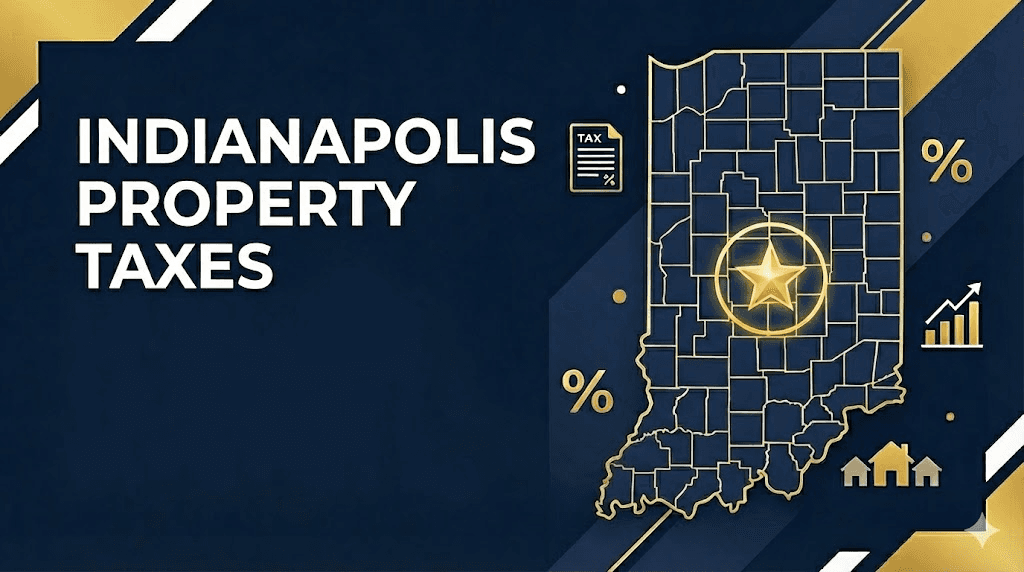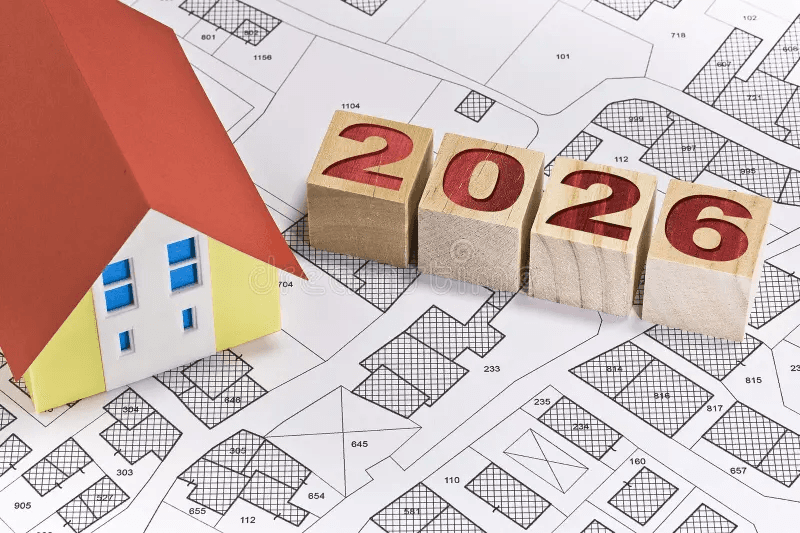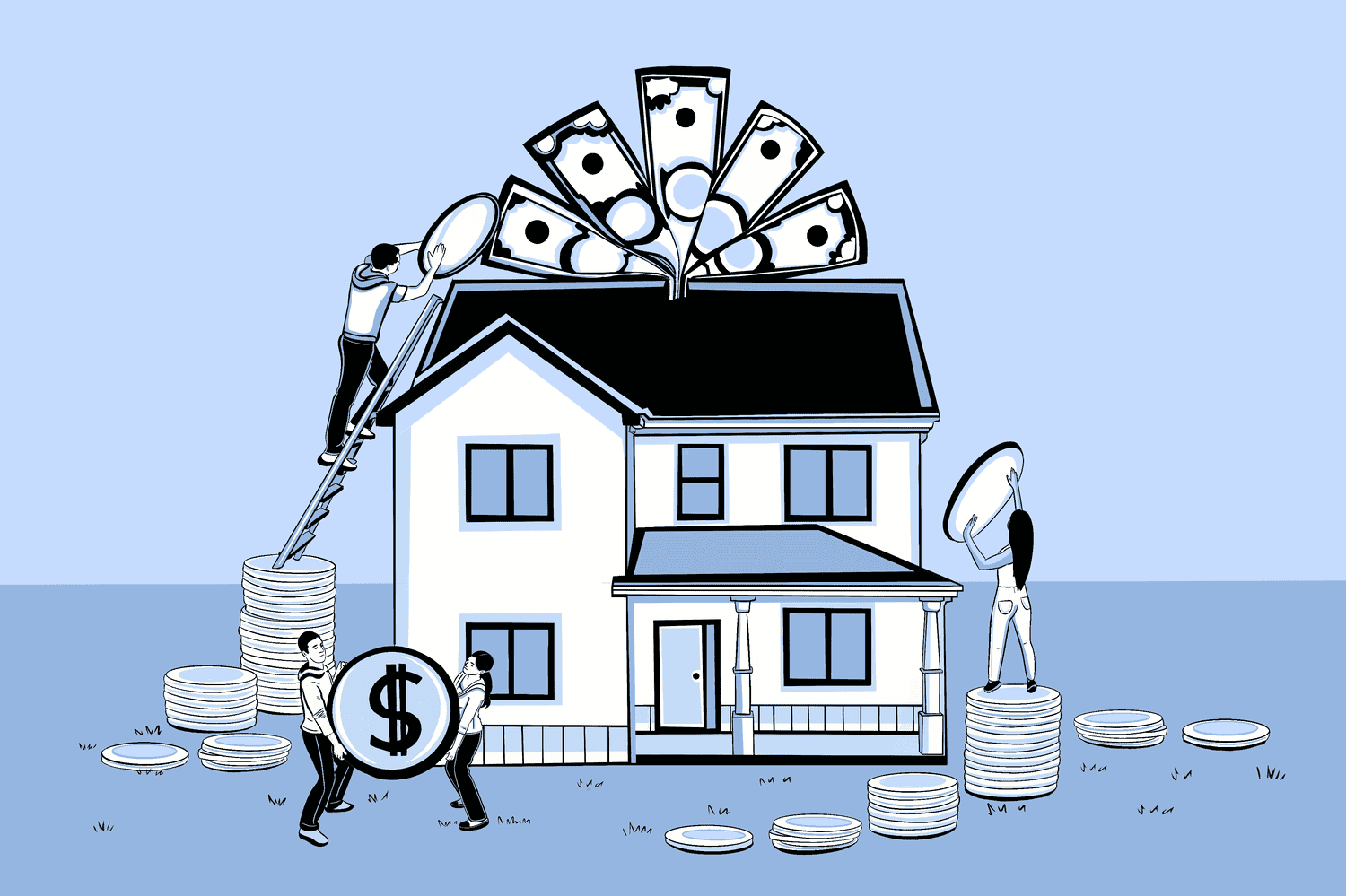The end of the year is one of the most important times for Indianapolis real estate investors. While most people stuff themselves with turkey and hit Black Friday deals, smart investors are reviewing their portfolios, tightening expenses, planning upcoming renovations, and positioning themselves for a stronger 2026.
A solid year-end portfolio check-up doesn’t just protect your cash flow — it sharpens your long-term ROI, reduces risk, and helps you take advantage of tax strategies before the year closes.
Here’s your complete, Indy-focused guide to finishing 2025 strong.
Why Year-End Matters for Real Estate Investors
Indianapolis has remained one of the Midwest’s most stable and in-demand investment markets. But stability doesn’t mean you can hit cruise control.
Year-end is your chance to:
Clarify which properties performed well
Catch issues before winter hits hard
Prep tax moves while you still have time
Reassess rents and leases
Evaluate insurance, maintenance, and operating costs
Plan capital improvements for early 2026
Small adjustments now = better returns later.
For tax insights that pair with this guide, see:
Real Estate Investor Tax Strategies 2025: Indiana
Step 1: Review Operating Performance Property by Property
Start with a simple but powerful question:
Did each property hit your expected cash flow and ROI in 2025?
Check:
Rental income collected vs. projected
Vacancy periods
Repairs + maintenance
Capital expenditures (HVAC, roof, plumbing, electric)
Insurance premium increases
Property tax changes
Utility expenses (especially multis)
Management fees
Patterns will emerge fast — especially if certain units are consistently more expensive or turnover-heavy.
Step 2: Adjust Rents Based on 2025 Market Trends
Indianapolis rents have shown steady but modest growth, particularly in:
Fountain Square
Garfield Park
Windsor Park
Near Northside
Irvington
Warren and Wayne Township pockets
Compare your current rents to:
Neighborhood comps
Condition of your property
Tenant quality and history
Lease renewal dates
Most Indy landlords raise rent once per year at a reasonable, market-aligned rate.
Pro tip:
Send renewal notices early — January and February leases are especially valuable.
Step 3: Review Your Insurance Policies
Home and landlord insurance costs jumped significantly in Indianapolis in 2025.
Use year-end to:
Re-shop policies
Review deductibles
Consider bundling
Update coverage after renovations
Add loss-of-rent coverage if missing
Evaluate roof age requirements
A quick policy review could save you hundreds per door.
For deeper insight, revisit:
Rising Home Insurance Costs Indianapolis 2025
Step 4: Plan Preventative Maintenance for Winter and Spring
With winter settling in, now’s the time to make sure your rentals are ready.
Winter checklist includes:
Furnace checks and filter changes
Gutter cleaning
Pipe insulation
Sump pump testing
Weatherstripping windows/doors
Smoke & CO detector testing
Driveway/sidewalk safety checks
Early spring is ideal for:
Roof repairs
Exterior painting
Landscaping
Siding and gutter replacement
Foundation grading fixes
Preventative work protects your long-term property value.
Step 5: Evaluate Tenant Performance & Lease Terms
Good tenants are an investor’s greatest asset.
Review:
On-time payment history
Communication responsiveness
Care of the unit
Any lease violations
Renewal likelihood
This helps you anticipate turnover — and turnover planning saves money.
Consider updating leases for:
Utility responsibilities
Late fee structure
Pet policies
Lawn/snow care
Annual inspections
A stronger lease = fewer headaches.
Step 6: Review Your Property Management Strategy
If you self-manage:
Are you burned out? Are you missing documentation? Do you have reliable vendors?
If you're using a PM:
Did they communicate well? Did they control costs? Did tenants renew?
If something feels off, year-end is the perfect time to upgrade your systems or your team.
Step 7: Estimate 2026 Capital Expenditures
Big repairs hit hard. Planning them early eases the pain.
Update your 2026 CAPEX list:
Roof replacements
HVAC nearing end-of-life
Water heaters
Exterior paint
Driveway repairs
Appliance packages
Budgeting now helps avoid surprises — and avoids cash flow strain.
Step 8: Consider Expanding or Consolidating Your Portfolio
Year-end is the ideal moment to ask:
Does my portfolio match my long-term strategy?
Some investors choose to:
Sell underperforming units
Refi to access equity
Trade up through a 1031 exchange
Buy additional properties
Pivot into BRRRR or small multis
Move into emerging Indy neighborhoods
Leaning into opportunity — not stagnation — is what separates good investors from great ones.
Step 9: Update Your Bookkeeping & Gather Tax Documents
Make tax season easy for yourself (and your CPA).
Prepare:
Income statements
Expense logs
1099s
Closing statements
Depreciation schedules
Insurance invoices
Contractor receipts
Good bookkeeping now = fewer headaches in March and April.
Step 10: Strengthen Your 2026 Investment Game Plan
With your portfolio reviewed, it’s time to think ahead.
Map out:
Acquisition targets
Financing strategy
Desired neighborhoods
Renovation plan
Long-term cash flow goals
Partnerships or private lenders
Exit strategies
A written plan makes you a more decisive investor.
Bonus: Avoid Rookie Mistakes Moving Into 2026
If you picked up your first rental this year, or you’re expanding into multi-units, you’ll want to review common pitfalls.
Check out:
5 Mistakes New Indianapolis Landlords Should Avoid
These errors drain cash flow fast — and are easy to fix early.
FAQs for Indy Investors
How often should I review my rental portfolio?
At least once a year — ideally every quarter.
Should I raise rent every year?
Most Indy investors increase rent annually based on market comps and tenant performance.
Is winter a good time to buy investment property?
Yes — less competition and more motivated sellers.
When should I plan renovations?
Winter for indoor projects, spring/summer for exterior work.
Final Thoughts
A year-end portfolio review is one of the highest-value activities an Indianapolis real estate investor can do. It keeps your rentals profitable, protects your properties, and positions you for smarter decisions in the year ahead.
If you want help analyzing your portfolio, planning upgrades, exploring new deals, or mapping out a 2026 investment plan, Roots Realty Co. is ready to partner with you.
Investor Resources: https://rootsrealty.co/invest/investor-resources
Join our newsletter: https://rootsrealty.co/join-roots-newsletter
The end of the year is one of the most important times for Indianapolis real estate investors. While most people stuff themselves with turkey and hit Black Friday deals, smart investors are reviewing their portfolios, tightening expenses, planning upcoming renovations, and positioning themselves for a stronger 2026.
A solid year-end portfolio check-up doesn’t just protect your cash flow — it sharpens your long-term ROI, reduces risk, and helps you take advantage of tax strategies before the year closes.
Here’s your complete, Indy-focused guide to finishing 2025 strong.
Why Year-End Matters for Real Estate Investors
Indianapolis has remained one of the Midwest’s most stable and in-demand investment markets. But stability doesn’t mean you can hit cruise control.
Year-end is your chance to:
Clarify which properties performed well
Catch issues before winter hits hard
Prep tax moves while you still have time
Reassess rents and leases
Evaluate insurance, maintenance, and operating costs
Plan capital improvements for early 2026
Small adjustments now = better returns later.
For tax insights that pair with this guide, see:
Real Estate Investor Tax Strategies 2025: Indiana
Step 1: Review Operating Performance Property by Property
Start with a simple but powerful question:
Did each property hit your expected cash flow and ROI in 2025?
Check:
Rental income collected vs. projected
Vacancy periods
Repairs + maintenance
Capital expenditures (HVAC, roof, plumbing, electric)
Insurance premium increases
Property tax changes
Utility expenses (especially multis)
Management fees
Patterns will emerge fast — especially if certain units are consistently more expensive or turnover-heavy.
Step 2: Adjust Rents Based on 2025 Market Trends
Indianapolis rents have shown steady but modest growth, particularly in:
Fountain Square
Garfield Park
Windsor Park
Near Northside
Irvington
Warren and Wayne Township pockets
Compare your current rents to:
Neighborhood comps
Condition of your property
Tenant quality and history
Lease renewal dates
Most Indy landlords raise rent once per year at a reasonable, market-aligned rate.
Pro tip:
Send renewal notices early — January and February leases are especially valuable.
Step 3: Review Your Insurance Policies
Home and landlord insurance costs jumped significantly in Indianapolis in 2025.
Use year-end to:
Re-shop policies
Review deductibles
Consider bundling
Update coverage after renovations
Add loss-of-rent coverage if missing
Evaluate roof age requirements
A quick policy review could save you hundreds per door.
For deeper insight, revisit:
Rising Home Insurance Costs Indianapolis 2025
Step 4: Plan Preventative Maintenance for Winter and Spring
With winter settling in, now’s the time to make sure your rentals are ready.
Winter checklist includes:
Furnace checks and filter changes
Gutter cleaning
Pipe insulation
Sump pump testing
Weatherstripping windows/doors
Smoke & CO detector testing
Driveway/sidewalk safety checks
Early spring is ideal for:
Roof repairs
Exterior painting
Landscaping
Siding and gutter replacement
Foundation grading fixes
Preventative work protects your long-term property value.
Step 5: Evaluate Tenant Performance & Lease Terms
Good tenants are an investor’s greatest asset.
Review:
On-time payment history
Communication responsiveness
Care of the unit
Any lease violations
Renewal likelihood
This helps you anticipate turnover — and turnover planning saves money.
Consider updating leases for:
Utility responsibilities
Late fee structure
Pet policies
Lawn/snow care
Annual inspections
A stronger lease = fewer headaches.
Step 6: Review Your Property Management Strategy
If you self-manage:
Are you burned out? Are you missing documentation? Do you have reliable vendors?
If you're using a PM:
Did they communicate well? Did they control costs? Did tenants renew?
If something feels off, year-end is the perfect time to upgrade your systems or your team.
Step 7: Estimate 2026 Capital Expenditures
Big repairs hit hard. Planning them early eases the pain.
Update your 2026 CAPEX list:
Roof replacements
HVAC nearing end-of-life
Water heaters
Exterior paint
Driveway repairs
Appliance packages
Budgeting now helps avoid surprises — and avoids cash flow strain.
Step 8: Consider Expanding or Consolidating Your Portfolio
Year-end is the ideal moment to ask:
Does my portfolio match my long-term strategy?
Some investors choose to:
Sell underperforming units
Refi to access equity
Trade up through a 1031 exchange
Buy additional properties
Pivot into BRRRR or small multis
Move into emerging Indy neighborhoods
Leaning into opportunity — not stagnation — is what separates good investors from great ones.
Step 9: Update Your Bookkeeping & Gather Tax Documents
Make tax season easy for yourself (and your CPA).
Prepare:
Income statements
Expense logs
1099s
Closing statements
Depreciation schedules
Insurance invoices
Contractor receipts
Good bookkeeping now = fewer headaches in March and April.
Step 10: Strengthen Your 2026 Investment Game Plan
With your portfolio reviewed, it’s time to think ahead.
Map out:
Acquisition targets
Financing strategy
Desired neighborhoods
Renovation plan
Long-term cash flow goals
Partnerships or private lenders
Exit strategies
A written plan makes you a more decisive investor.
Bonus: Avoid Rookie Mistakes Moving Into 2026
If you picked up your first rental this year, or you’re expanding into multi-units, you’ll want to review common pitfalls.
Check out:
5 Mistakes New Indianapolis Landlords Should Avoid
These errors drain cash flow fast — and are easy to fix early.
FAQs for Indy Investors
How often should I review my rental portfolio?
At least once a year — ideally every quarter.
Should I raise rent every year?
Most Indy investors increase rent annually based on market comps and tenant performance.
Is winter a good time to buy investment property?
Yes — less competition and more motivated sellers.
When should I plan renovations?
Winter for indoor projects, spring/summer for exterior work.
Final Thoughts
A year-end portfolio review is one of the highest-value activities an Indianapolis real estate investor can do. It keeps your rentals profitable, protects your properties, and positions you for smarter decisions in the year ahead.
If you want help analyzing your portfolio, planning upgrades, exploring new deals, or mapping out a 2026 investment plan, Roots Realty Co. is ready to partner with you.
Investor Resources: https://rootsrealty.co/invest/investor-resources
Join our newsletter: https://rootsrealty.co/join-roots-newsletter
The end of the year is one of the most important times for Indianapolis real estate investors. While most people stuff themselves with turkey and hit Black Friday deals, smart investors are reviewing their portfolios, tightening expenses, planning upcoming renovations, and positioning themselves for a stronger 2026.
A solid year-end portfolio check-up doesn’t just protect your cash flow — it sharpens your long-term ROI, reduces risk, and helps you take advantage of tax strategies before the year closes.
Here’s your complete, Indy-focused guide to finishing 2025 strong.
Why Year-End Matters for Real Estate Investors
Indianapolis has remained one of the Midwest’s most stable and in-demand investment markets. But stability doesn’t mean you can hit cruise control.
Year-end is your chance to:
Clarify which properties performed well
Catch issues before winter hits hard
Prep tax moves while you still have time
Reassess rents and leases
Evaluate insurance, maintenance, and operating costs
Plan capital improvements for early 2026
Small adjustments now = better returns later.
For tax insights that pair with this guide, see:
Real Estate Investor Tax Strategies 2025: Indiana
Step 1: Review Operating Performance Property by Property
Start with a simple but powerful question:
Did each property hit your expected cash flow and ROI in 2025?
Check:
Rental income collected vs. projected
Vacancy periods
Repairs + maintenance
Capital expenditures (HVAC, roof, plumbing, electric)
Insurance premium increases
Property tax changes
Utility expenses (especially multis)
Management fees
Patterns will emerge fast — especially if certain units are consistently more expensive or turnover-heavy.
Step 2: Adjust Rents Based on 2025 Market Trends
Indianapolis rents have shown steady but modest growth, particularly in:
Fountain Square
Garfield Park
Windsor Park
Near Northside
Irvington
Warren and Wayne Township pockets
Compare your current rents to:
Neighborhood comps
Condition of your property
Tenant quality and history
Lease renewal dates
Most Indy landlords raise rent once per year at a reasonable, market-aligned rate.
Pro tip:
Send renewal notices early — January and February leases are especially valuable.
Step 3: Review Your Insurance Policies
Home and landlord insurance costs jumped significantly in Indianapolis in 2025.
Use year-end to:
Re-shop policies
Review deductibles
Consider bundling
Update coverage after renovations
Add loss-of-rent coverage if missing
Evaluate roof age requirements
A quick policy review could save you hundreds per door.
For deeper insight, revisit:
Rising Home Insurance Costs Indianapolis 2025
Step 4: Plan Preventative Maintenance for Winter and Spring
With winter settling in, now’s the time to make sure your rentals are ready.
Winter checklist includes:
Furnace checks and filter changes
Gutter cleaning
Pipe insulation
Sump pump testing
Weatherstripping windows/doors
Smoke & CO detector testing
Driveway/sidewalk safety checks
Early spring is ideal for:
Roof repairs
Exterior painting
Landscaping
Siding and gutter replacement
Foundation grading fixes
Preventative work protects your long-term property value.
Step 5: Evaluate Tenant Performance & Lease Terms
Good tenants are an investor’s greatest asset.
Review:
On-time payment history
Communication responsiveness
Care of the unit
Any lease violations
Renewal likelihood
This helps you anticipate turnover — and turnover planning saves money.
Consider updating leases for:
Utility responsibilities
Late fee structure
Pet policies
Lawn/snow care
Annual inspections
A stronger lease = fewer headaches.
Step 6: Review Your Property Management Strategy
If you self-manage:
Are you burned out? Are you missing documentation? Do you have reliable vendors?
If you're using a PM:
Did they communicate well? Did they control costs? Did tenants renew?
If something feels off, year-end is the perfect time to upgrade your systems or your team.
Step 7: Estimate 2026 Capital Expenditures
Big repairs hit hard. Planning them early eases the pain.
Update your 2026 CAPEX list:
Roof replacements
HVAC nearing end-of-life
Water heaters
Exterior paint
Driveway repairs
Appliance packages
Budgeting now helps avoid surprises — and avoids cash flow strain.
Step 8: Consider Expanding or Consolidating Your Portfolio
Year-end is the ideal moment to ask:
Does my portfolio match my long-term strategy?
Some investors choose to:
Sell underperforming units
Refi to access equity
Trade up through a 1031 exchange
Buy additional properties
Pivot into BRRRR or small multis
Move into emerging Indy neighborhoods
Leaning into opportunity — not stagnation — is what separates good investors from great ones.
Step 9: Update Your Bookkeeping & Gather Tax Documents
Make tax season easy for yourself (and your CPA).
Prepare:
Income statements
Expense logs
1099s
Closing statements
Depreciation schedules
Insurance invoices
Contractor receipts
Good bookkeeping now = fewer headaches in March and April.
Step 10: Strengthen Your 2026 Investment Game Plan
With your portfolio reviewed, it’s time to think ahead.
Map out:
Acquisition targets
Financing strategy
Desired neighborhoods
Renovation plan
Long-term cash flow goals
Partnerships or private lenders
Exit strategies
A written plan makes you a more decisive investor.
Bonus: Avoid Rookie Mistakes Moving Into 2026
If you picked up your first rental this year, or you’re expanding into multi-units, you’ll want to review common pitfalls.
Check out:
5 Mistakes New Indianapolis Landlords Should Avoid
These errors drain cash flow fast — and are easy to fix early.
FAQs for Indy Investors
How often should I review my rental portfolio?
At least once a year — ideally every quarter.
Should I raise rent every year?
Most Indy investors increase rent annually based on market comps and tenant performance.
Is winter a good time to buy investment property?
Yes — less competition and more motivated sellers.
When should I plan renovations?
Winter for indoor projects, spring/summer for exterior work.
Final Thoughts
A year-end portfolio review is one of the highest-value activities an Indianapolis real estate investor can do. It keeps your rentals profitable, protects your properties, and positions you for smarter decisions in the year ahead.
If you want help analyzing your portfolio, planning upgrades, exploring new deals, or mapping out a 2026 investment plan, Roots Realty Co. is ready to partner with you.
Investor Resources: https://rootsrealty.co/invest/investor-resources
Join our newsletter: https://rootsrealty.co/join-roots-newsletter
The end of the year is one of the most important times for Indianapolis real estate investors. While most people stuff themselves with turkey and hit Black Friday deals, smart investors are reviewing their portfolios, tightening expenses, planning upcoming renovations, and positioning themselves for a stronger 2026.
A solid year-end portfolio check-up doesn’t just protect your cash flow — it sharpens your long-term ROI, reduces risk, and helps you take advantage of tax strategies before the year closes.
Here’s your complete, Indy-focused guide to finishing 2025 strong.
Why Year-End Matters for Real Estate Investors
Indianapolis has remained one of the Midwest’s most stable and in-demand investment markets. But stability doesn’t mean you can hit cruise control.
Year-end is your chance to:
Clarify which properties performed well
Catch issues before winter hits hard
Prep tax moves while you still have time
Reassess rents and leases
Evaluate insurance, maintenance, and operating costs
Plan capital improvements for early 2026
Small adjustments now = better returns later.
For tax insights that pair with this guide, see:
Real Estate Investor Tax Strategies 2025: Indiana
Step 1: Review Operating Performance Property by Property
Start with a simple but powerful question:
Did each property hit your expected cash flow and ROI in 2025?
Check:
Rental income collected vs. projected
Vacancy periods
Repairs + maintenance
Capital expenditures (HVAC, roof, plumbing, electric)
Insurance premium increases
Property tax changes
Utility expenses (especially multis)
Management fees
Patterns will emerge fast — especially if certain units are consistently more expensive or turnover-heavy.
Step 2: Adjust Rents Based on 2025 Market Trends
Indianapolis rents have shown steady but modest growth, particularly in:
Fountain Square
Garfield Park
Windsor Park
Near Northside
Irvington
Warren and Wayne Township pockets
Compare your current rents to:
Neighborhood comps
Condition of your property
Tenant quality and history
Lease renewal dates
Most Indy landlords raise rent once per year at a reasonable, market-aligned rate.
Pro tip:
Send renewal notices early — January and February leases are especially valuable.
Step 3: Review Your Insurance Policies
Home and landlord insurance costs jumped significantly in Indianapolis in 2025.
Use year-end to:
Re-shop policies
Review deductibles
Consider bundling
Update coverage after renovations
Add loss-of-rent coverage if missing
Evaluate roof age requirements
A quick policy review could save you hundreds per door.
For deeper insight, revisit:
Rising Home Insurance Costs Indianapolis 2025
Step 4: Plan Preventative Maintenance for Winter and Spring
With winter settling in, now’s the time to make sure your rentals are ready.
Winter checklist includes:
Furnace checks and filter changes
Gutter cleaning
Pipe insulation
Sump pump testing
Weatherstripping windows/doors
Smoke & CO detector testing
Driveway/sidewalk safety checks
Early spring is ideal for:
Roof repairs
Exterior painting
Landscaping
Siding and gutter replacement
Foundation grading fixes
Preventative work protects your long-term property value.
Step 5: Evaluate Tenant Performance & Lease Terms
Good tenants are an investor’s greatest asset.
Review:
On-time payment history
Communication responsiveness
Care of the unit
Any lease violations
Renewal likelihood
This helps you anticipate turnover — and turnover planning saves money.
Consider updating leases for:
Utility responsibilities
Late fee structure
Pet policies
Lawn/snow care
Annual inspections
A stronger lease = fewer headaches.
Step 6: Review Your Property Management Strategy
If you self-manage:
Are you burned out? Are you missing documentation? Do you have reliable vendors?
If you're using a PM:
Did they communicate well? Did they control costs? Did tenants renew?
If something feels off, year-end is the perfect time to upgrade your systems or your team.
Step 7: Estimate 2026 Capital Expenditures
Big repairs hit hard. Planning them early eases the pain.
Update your 2026 CAPEX list:
Roof replacements
HVAC nearing end-of-life
Water heaters
Exterior paint
Driveway repairs
Appliance packages
Budgeting now helps avoid surprises — and avoids cash flow strain.
Step 8: Consider Expanding or Consolidating Your Portfolio
Year-end is the ideal moment to ask:
Does my portfolio match my long-term strategy?
Some investors choose to:
Sell underperforming units
Refi to access equity
Trade up through a 1031 exchange
Buy additional properties
Pivot into BRRRR or small multis
Move into emerging Indy neighborhoods
Leaning into opportunity — not stagnation — is what separates good investors from great ones.
Step 9: Update Your Bookkeeping & Gather Tax Documents
Make tax season easy for yourself (and your CPA).
Prepare:
Income statements
Expense logs
1099s
Closing statements
Depreciation schedules
Insurance invoices
Contractor receipts
Good bookkeeping now = fewer headaches in March and April.
Step 10: Strengthen Your 2026 Investment Game Plan
With your portfolio reviewed, it’s time to think ahead.
Map out:
Acquisition targets
Financing strategy
Desired neighborhoods
Renovation plan
Long-term cash flow goals
Partnerships or private lenders
Exit strategies
A written plan makes you a more decisive investor.
Bonus: Avoid Rookie Mistakes Moving Into 2026
If you picked up your first rental this year, or you’re expanding into multi-units, you’ll want to review common pitfalls.
Check out:
5 Mistakes New Indianapolis Landlords Should Avoid
These errors drain cash flow fast — and are easy to fix early.
FAQs for Indy Investors
How often should I review my rental portfolio?
At least once a year — ideally every quarter.
Should I raise rent every year?
Most Indy investors increase rent annually based on market comps and tenant performance.
Is winter a good time to buy investment property?
Yes — less competition and more motivated sellers.
When should I plan renovations?
Winter for indoor projects, spring/summer for exterior work.
Final Thoughts
A year-end portfolio review is one of the highest-value activities an Indianapolis real estate investor can do. It keeps your rentals profitable, protects your properties, and positions you for smarter decisions in the year ahead.
If you want help analyzing your portfolio, planning upgrades, exploring new deals, or mapping out a 2026 investment plan, Roots Realty Co. is ready to partner with you.
Investor Resources: https://rootsrealty.co/invest/investor-resources
Join our newsletter: https://rootsrealty.co/join-roots-newsletter








